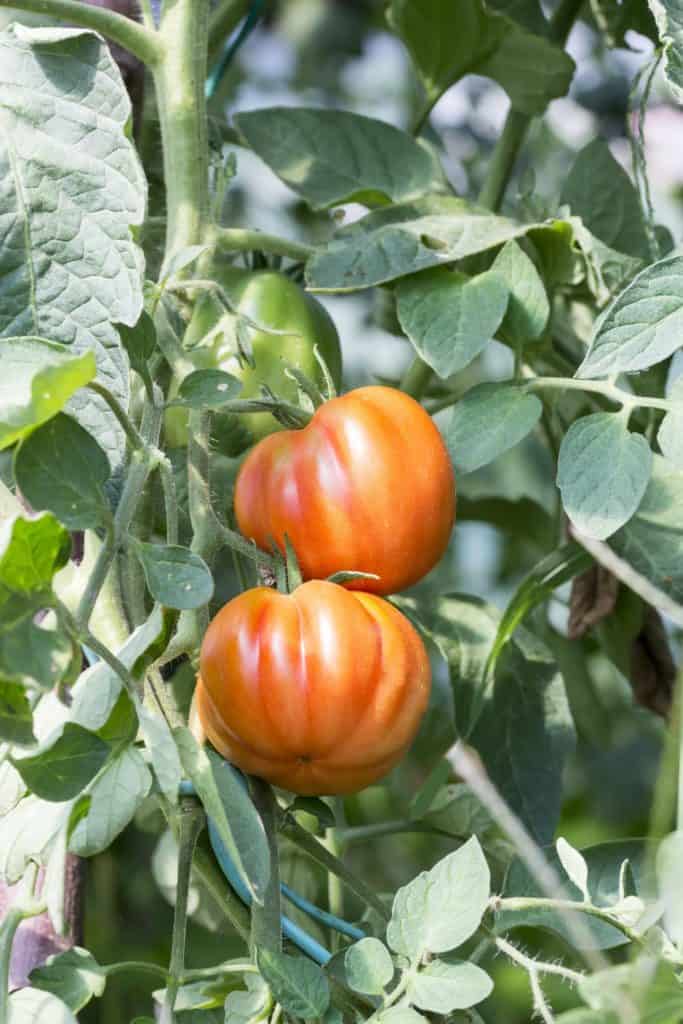What’s an heirloom tomato?
What Is An Heirloom Tomato? Generally, an heirloom tomato is thought of as a variety of tomato that has been passed down over a number of generations within a family. This is because it has some, or perhaps many, valuable characteristics. Otherwise, no one would care to pass it down.

It’s the same philosophy of why we pass down heirlooms without our own families – perhaps because of financial value but definitely because there is some sentimental value among other things.
Heirloom tomatoes, over the prior number of years, have become particularly popular among gardeners. This has led to the term being liberally used in the commercial arena. And it’s not always fairly used within the commercial arena. Sometimes, it’s merely a way to make more money.
Many tomato experts qualify heirloom tomatoes in terms of categories. Here are the four categories offered by experts Carlyn Male and Craig LeHouillier:
Commercial heirloom: Tomato varieties that were introduced prior to 1940. Or tomato varieties that have been in circulation for over 50 years. Additionally, commercial heirlooms have to be open-pollinated varieties. As a matter of fact, all varieties of heirlooms are open-pollinated. That doesn’t mean that all open-pollinated tomato varieties are heirlooms.
Family heirloom: In this case, we are referring to seeds that have been passed down through a family over a number of generations.
Created heirloom: Here we are referring to the cross between two parents that are known, whether that be two heirlooms or the cross between an heirloom and a hybrid. The resulting seeds are then ‘dehybridized’ until the undesirable characteristics are eliminated and the desirable characteristics are stabilized. This process can take eight years or perhaps longer.
Mystery heirloom: Referring to varieties of tomatoes that produced through the process of natural cross-pollination which occurs between other varieties of heirlooms.
Why Are Heirloom Tomatoes so Important?
Over the previous 40-50 years sadly we’ve lost some heirloom tomato varieties. In fact, we’ve lost quite a lot. That, at least in part is because many of the small-sized family farms that were very supportive of heirloom tomatoes have also been lost.
There were, at one time, many heirloom tomato varieties that had emerged through hundreds of years of adaptation in order to survive. These, in more recent times, have been replaced by far fewer tomatoes of the hybrid kind. As we know, hybrid tomato varieties are bred on account of a few commercially attractive characteristics.
All heirloom tomato varieties are genetically unique. Inherent within such uniqueness is a resistance that has evolved – a resistance to pests and to diseases. Further, heirlooms have adapted to relatively specific climatic and growing conditions.
What do Heirloom Tomatoes Taste Like?
It’s impossible to quantify the taste of all heirloom tomatoes. After all, just like other tomatoes, heirlooms all have a different taste from one another.
There are subtle differences in taste in heirloom tomatoes that you will not find in other tomatoes. With a yellow heirloom, you’ll perhaps find that the taste is milder. With a red heirloom, you’ll perhaps note that there’s additional acidic quality to it.
A point to note is if you were to read a canning recipe that was written back in the 1930s or in the 40s there’s nothing that you would have added to it to get more flavor. That’s, at least in large part, due to the high acidity of heirloom tomatoes.
The tomatoes we produce these days don’t have nearly as much flavor as heirloom tomatoes. We’ve bred everything out of tomatoes to produce what we call F1 hybrid tomatoes.
So, if you do want to find a beautifully fresh tomato in mid winter, the best thing to do is to head down to the grocery store, get yourself a can of Roma tomatoes, put the Romas in the salad bowl, then add your preferred salad dressing. Doing it this way you’ll get the authentic taste of tomatoes – much more authentic than if you were to buy fresh tomatoes and use them for your salad.
So, as a final thought, it’s really up to ourselves, up to us as gardeners that we at least attempt to maintain and sustain the diversity that we have in heirloom tomato varieties.
To do that we need to keep buying them for consumption and we need to keep growing them for the pleasure and the goodness they provide.


20 thoughts on “What is An Heirloom Tomato? What Does ‘Heirloom Tomato’ Mean?”